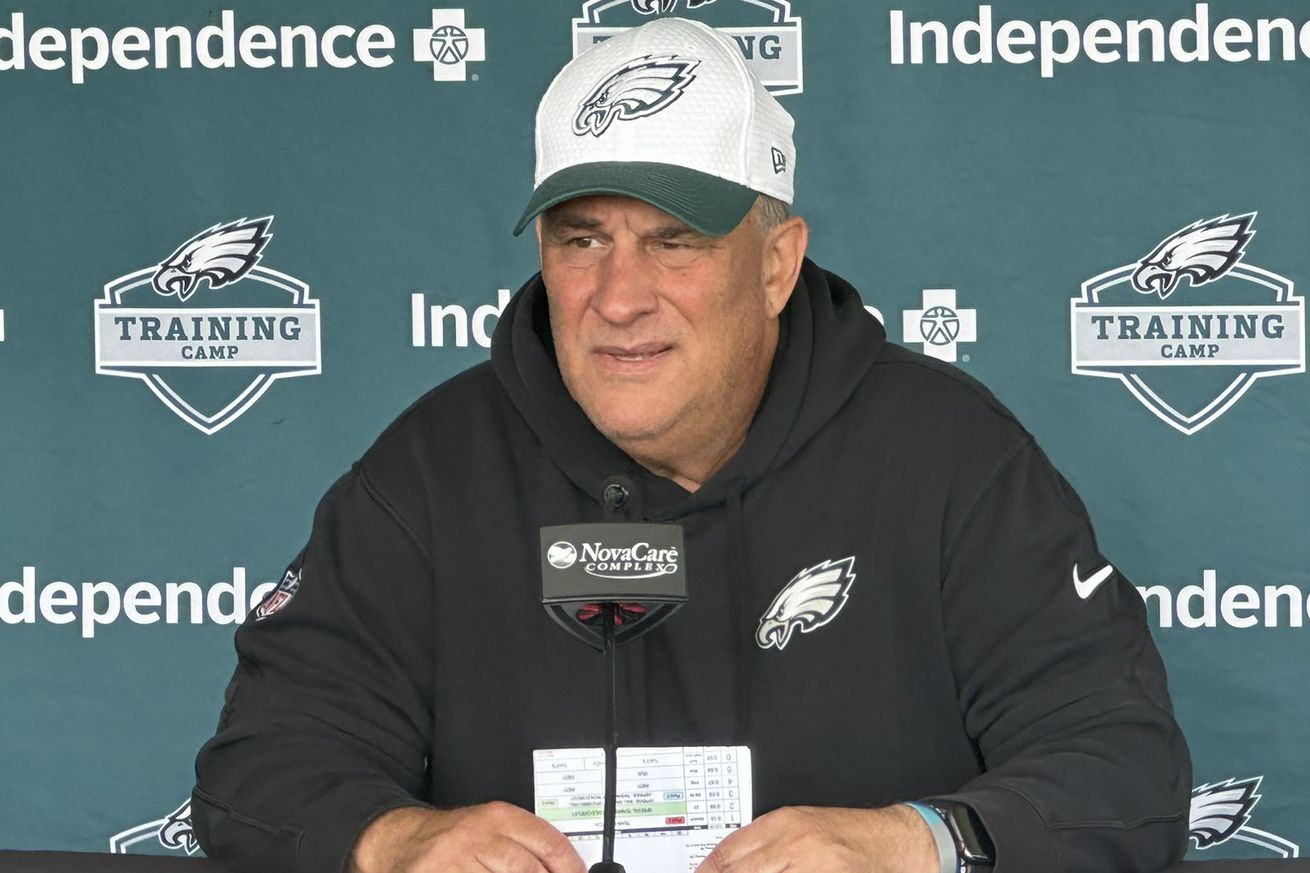
The “Fangio defense.”
Named after its creator, Vic Fangio, who was hired as the Eagles’ defensive coordinator, this defense is known for being complex. In particular, Fangio’s defense is known for using confusing terminology that can make things sound more complicated than they are. I wanted to study Fangio’s defense again and write a series of posts where I will attempt to simplify the Vic Fangio style defense, breaking it down into easy-to-understand parts.
Numerous writers have already written incredibly in-depth articles on Fangio’s defense. The three that I have learned the most from are Honest NFL, Shawn Syed, and Cody Alexander (Match Quarters). I frequently use their work in these articles, and I can’t thank them enough for their work and for teaching me the “Fangio defense”.
However, while these accounts do a brilliant job explaining the intricacies of the Fangio defense, I think some of it can be too complicated or necessary for the fan who wants to understand the basics when watching the game on Sunday. Not everyone needs to analyze football, but understanding the schemes can make watching the game more enjoyable. So, my goal for this series is to simplify the Vic Fangio-style defense and break it down into easy-to-understand parts.
Part One – The Basics
The Fangio Philosophy
Let’s start at the very beginning. As I am sure many of you already know, Fangio’s defense is known for its two-high structures and lightboxes. Fangio’s defenses play a lot of two-high shells before the snap, so get used to seeing this look with the two deep safeties lining up in a two-high shell.
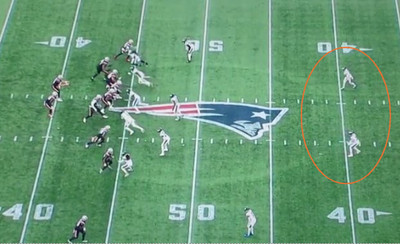
You may also hear analysts refer to this pre-snap look as ‘Middle of the field open’ or ‘MOFO’/MFO. This simply states that there is no defender pre-snap in the middle of the field, so the middle of the field is open.
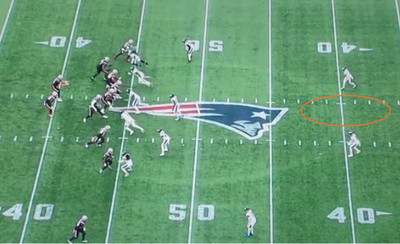
Why does Fangio do this? There are numerous reasons, but the single biggest reason is this:
- Two-high shells pre-snap allow you to get into various coverages post-snap while keeping the pre-snap look identical. However, this gives the quarterback nothing to help him decide where to go with the football pre-snap. This forces quarterbacks to make post-snap reads, which tests their decision-making and processing speed.
Imagine you are an opposing quarterback looking at this play before the snap.
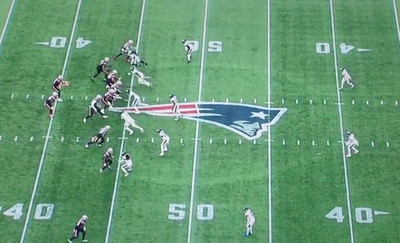
There is no indication of the coverage. It could be man or zone. It looks like two-high, but you know it could change. Fangio has his whole menu of coverages available to him with this pre-snap look. This play ended up as a form of Cover 1 man coverage (more on that in another article). This went from ‘middle of the field open’ to ‘middle of the field closed’ post-snap, as you can see below.
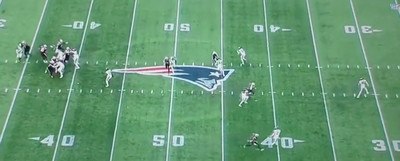
It is crucial for a defense to make a quarterback work post-snap, and lining up with this two-high shell makes every quarterback think after the snap. They can’t trust anything they see pre-snap, and this is important when trying to stop the very best quarterbacks. Even just making them hold the ball for an extra half a second is huge.
If you are wondering, why do you have to be two-high to rotate coverage? Can’t you do it from single-high? You can, but it is harder because the safety has to run backward to get from single-high to two-high, like this.
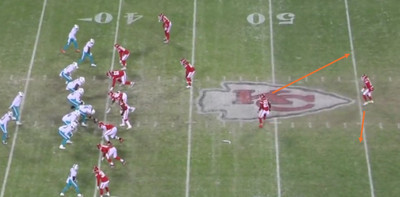
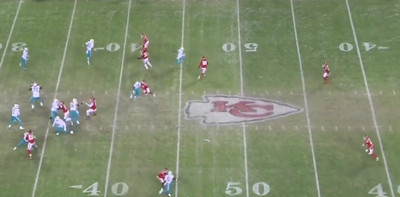
While this can work, it means that against a running play, you would have a safety running backward rather than forward. This is not what you want. It is also harder to react to play action, so this is not something you will see teams do routinely.
There are other reasons why Fangio lines up in a two-high shell on the majority of snaps, too:
- Two-high defenses are harder to throw over the top, which limits big plays. This defense style has reduced the number of explosive pass plays in the NFL. It forces quarterbacks to check the ball down more and throw it short, which tests modern quarterbacks’ ability to stay patient and not force it.
- Fangio’s philosophy is based on the idea that it is easier to play defense coming downhill rather than running backward. By starting deeper, defenders can keep the game in front of them rather than constantly turning and running. Simply put, defenders are fasting, running downhill rather than running backward.
- It enables you to put a shell or a bracket on elite receivers (more on this later in the series), as both sides of the field have a deep safety pre-snap.
- Many NFL offenses are run by coaches from the Kyle Shanahan coaching tree. The Shanahan offense is known for a lot of under-center play-action, which forces the quarterback to turn his back on the defense. This makes post-snap safety rotation even more helpful because the quarterback cannot see the rotation until he turns his head around. Here’s an example of this by the Patriots against the 49ers.
This looks like a two-high coverage when the quarterback looks at the defense pre-snap.
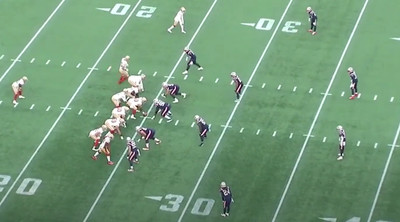
However, the safeties rotate into single-high coverage when the quarterback runs the play fake and is not looking.
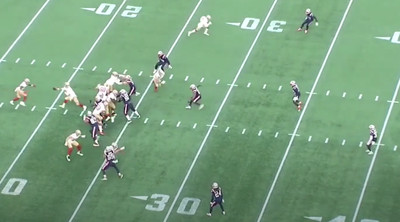
By the time the quarterback can read the defense again, it has completely changed.
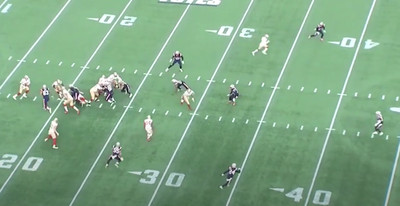
This is why this defense can be effective against teams that run a lot of under-center play-action.
Fronts & Personnel
Now that we have covered the basics of the two-high shell let’s examine the main fronts and personnel use. Due to the terminology used, this section can become needlessly overcomplicated, so I will try to keep it simple. These are the basic fronts. Thanks to Shawn Syed for the graphic and pictures below. There are countless fronts that a defense can run, but we will look at the main ones below.
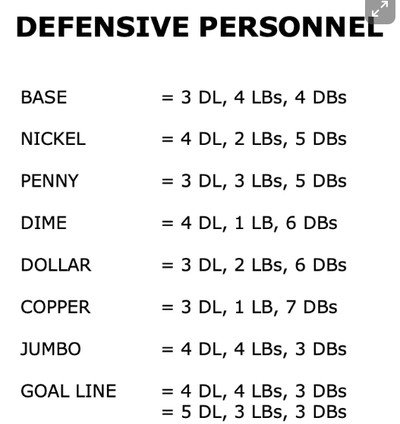
Personally, I don’t use these terms a lot in my writing. They are pretty easy to understand, but they can also be annoying for fans who constantly have to refer back to what ‘Penny’ means, for example. Additionally, the personnel can depend on what you categorize a certain player as. For example, you could refer to the ‘Nickel’ front as a 2-4-5 (rather than a 4-2-5) if you count the edge defenders as linebackers.
In this section, I will discuss some of the techniques used by defensive linemen. If you aren’t sure what I am talking about, please refer to this handy chart from the Weekly Spiral.

The key things you want to look for are the number of linemen and linebackers and their positions. These are the three key fronts I would look out for on Sunday, as these fronts will make up the majority of the Eagles’ snaps:
Base / 3-4 / 5-2
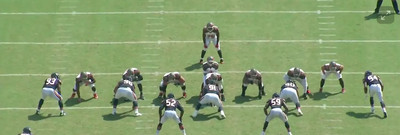
This is your standard 3-4 defense with a nose tackle (who may sometimes shade to one side) and 2 defensive tackles (usually playing the 4/4i technique). This front would be called on early downs against heavy personnel when you only need 4 defensive backs on the field. This defensive front can be unpredictable regarding rushing the quarterback, as both the EDGE defenders could drop into coverage.
To make things easier, I often refer to this as a 5-2 front, as it has 5 on the LOS and 2 linebackers behind it. When I think of the old-school 3-4, I think of the EDGE defenders being slightly off the LOS (I played too much Maddem), but that may just be me!
Nickel / 4-2
This is the front you will see against 11 personnel often. This front has weaknesses against the run, so you often see a defensive back or nickel come down quickly as an extra defender. This is a great look for obvious passing downs when the defensive linemen and EDGE rushers can get up the field quickly without worrying about plugging gaps in the run game. You will normally see this front run in two different ways.
On early downs, you will normally see it run with two 9 techniques, a 0/1 (1 is also called shade) technique, and a 3 technique. This 0/1 technique should be Jordan Davis’s role in a 4-man front, although he didn’t play much in the Eagles’ 4-man front as a rookie. You can see the 9-3-Shade-9 below.
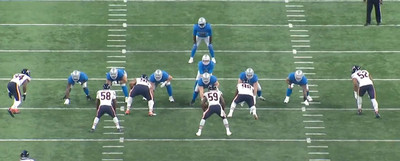
On obvious pass-rushing downs, you will see two 3 techinques as you don’t need a bigger run stuffer to play as the shade. So the 4-2 looks more like 9-3-3-9 like this.
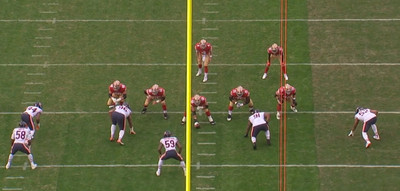
Penny / 5-1
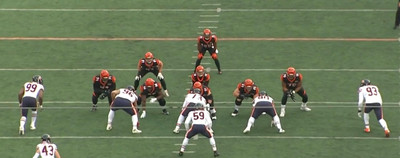
This front can be run in any situation. It’s my favorite front, as it allows you to get 5 men on the line of scrimmage against the run on early downs without sacrificing a defensive back in coverage. It also means the Eagles have to play with only 1 linebacker, which is always a win…
Summary
Again, you can get a lot more technical than this, but this is meant to be a basic guide, so I’m not covering everything here. You will see some different fronts in specific situations (obvious pass situations or on the goalline), but the fronts above will make up the majority of snaps taken by the Eagles’ defense.
This is an incredible oversimplification of Fangio’s fronts… but I’m going to say it anyway! Ideally, you want to run 4 man fronts more frequently as it enables you to have another man in coverage. A good test for the Eagles’ run defense is whether they can run more 4-man fronts on early downs and still stop the run. If the Eagles are struggling to stop the run on early downs by playing 4-man fronts, you will often see them start to run 5-man fronts.
Passing Strength
Over the next few articles, I will discuss different Fangio coverages. However, none of this will make sense unless you understand what I mean by ‘passing strength.’ Fangio’s defenses often have different coverage rules for different halves of the field, depending on how the offense is lined up. This links with the two-high look we looked at earlier; you have a deep safety in each half of the field.
Fangio’s coverages will have different rules for the ‘passing strength,’ so it’s important that we can recognize which side the passing strength is on. Usually, the passing strength is simply the side that has the most eligible receivers. It’s pretty easy to figure out. Just imagine you drew a line through the middle of the field; the side with the most eligible receivers is normally the passing strength. For example, the passing strength below is the side with the 3 receivers lined up.

Running backs don’t play a part in determining the passing strength, so focus on the tight ends and receivers. Usually, the side with the most receivers will determine the passing strength. If it is a 2×2 with 2 receivers on each side, I believe the defense will make a pre-snap call to determine the side with the ‘passing strength.’
Again, you don’t need to worry too much about this to understand his defense, but I wanted to briefly explain it so you understand what I am talking about in future posts when I refer to the ‘passing strength.’
I hope part one of this breakdown of Fangio’s defense has given you a clearer picture of the basics. I will discuss the main coverages and run fits in the next few articles. As always, I would love to hear your feedback and thoughts, and if you have any questions, just let me know!